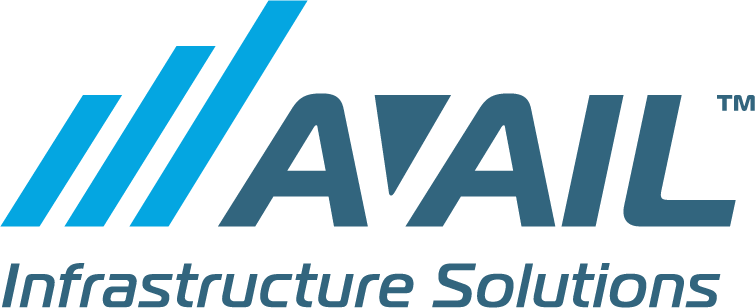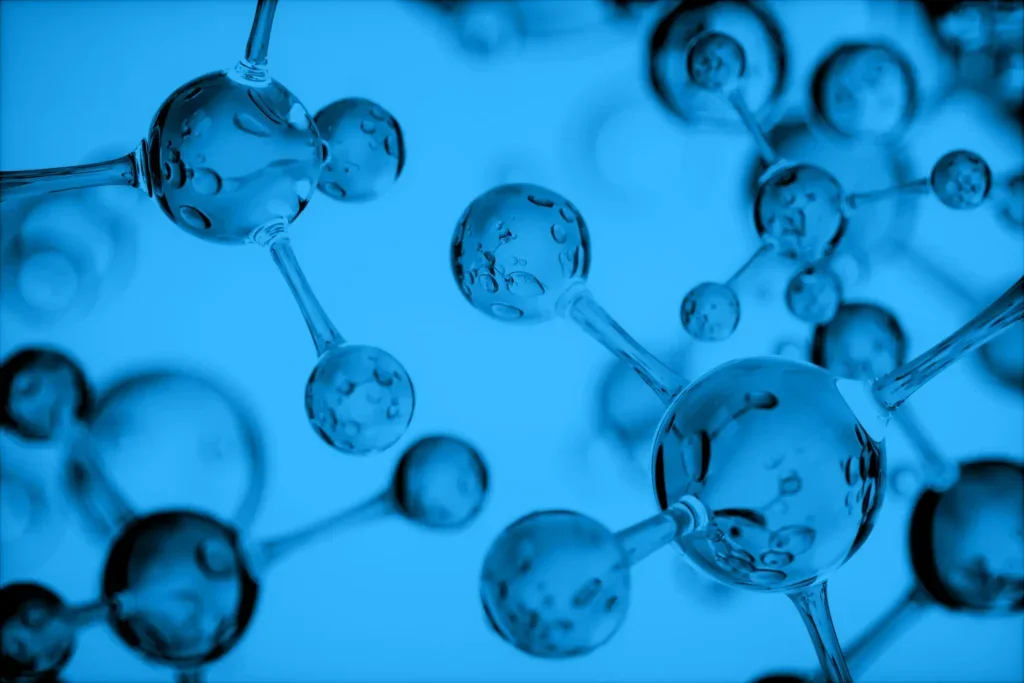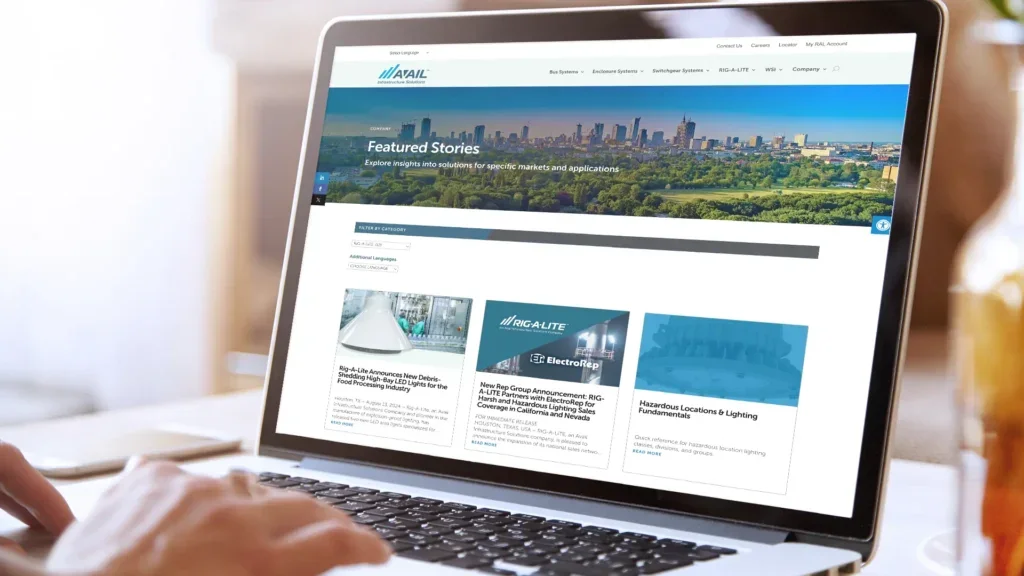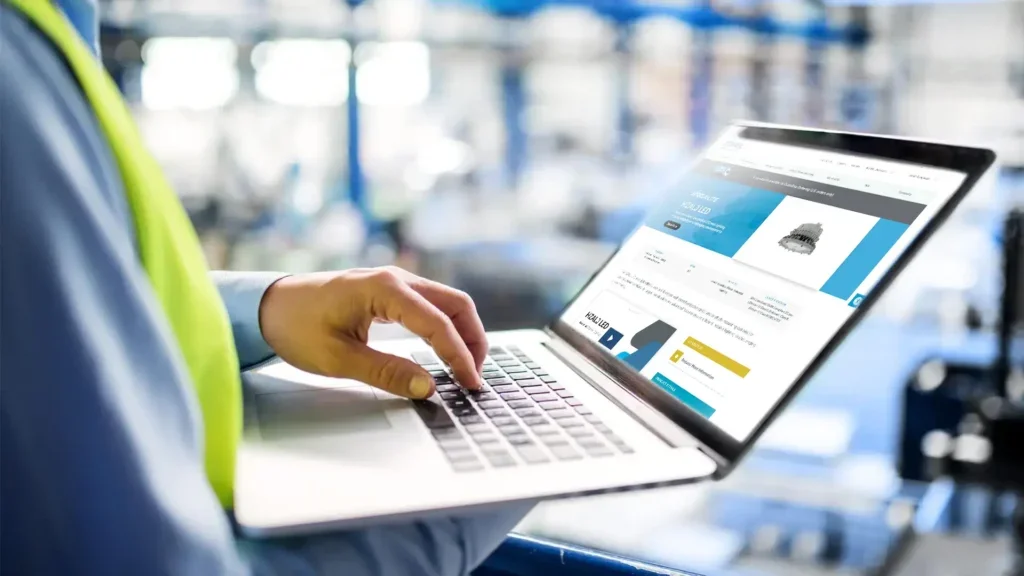
Hazardous Location Lighting Glossary of Terms
For more than 80 years, RIG-A-LITE has provided hazardous location lighting and explosion proof fixtures for the world’s toughest environments. This glossary offers clear explanations of the classifications, certifications, and technical terms you will see across our products, giving you the knowledge to better understand your options and find the right lighting solution for your application.
Classifications
b
- Build America, Buy America Act (BABA)Federal requirement that infrastructure products, including lighting, are manufactured in the United States
- Buy American Act (BAA)Federal requirement that government-funded projects use products substantially manufactured in the United States
c
- Class I, Division 1 (C1D1)Hazardous location classification where flammable gases, vapors, or liquids are continuously present
- Class I, Division 2 (C1D2)Hazardous location classification where flammable gases, vapors, or liquids are not normally present but may exist under abnormal conditions
- Class II, Division 1 (C2D1)Hazardous location classification where combustible dust is regularly present
- Class II, Division 2 (C2D2)Hazardous location classification where combustible dust is not normally present but may exist under abnormal conditions
- Class III (C3)Hazardous location classification where easily ignitable fibers or flyings are present under normal conditions
g
- Groups (Hazardous Locations)
NEC designations that define the specific type of gas, vapor, or dust present in a hazardous environment
Class I Groups
Group A: Acetylene
Group B: Hydrogen or gases of equivalent hazard
Group C: Ethylene, cyclopropane, and similar gases
Group D: Propane, gasoline, butane, alcohol, natural gas, acetone, benzene, and similar vaporsClass II Groups
Group E: Combustible metal dusts such as aluminum and magnesium
Group F: Carbonaceous dusts such as coal, carbon black, and coke with volatile content above 8%
Group G: Organic dusts such as grain, flour, starch, cocoa, wood, plastics, and chemicals i
- IEC 60079 Zones
International classification system for hazardous areas under IEC/ATEX standards
Zones (Gas Atmospheres):
Zone 0: Explosive gas or vapor continuously present or present for long periods
Zone 1: Explosive gas or vapor likely to occur in normal operation
Zone 2: Explosive gas or vapor unlikely in normal operation, and if present, exists only for a short timeZones (Dust Atmospheres):
Zone 20: Combustible dust continuously or frequently present in sufficient quantity to form explosive mixtures
Zone 21: Combustible dust likely to occur in normal operation
Zone 22: Combustible dust unlikely in normal operation, and if present, persists only for a short time
Hazardous Location Terms
e
- Explosion Proof LightingFixtures designed for Class I, II, and III hazardous locations, containing internal sparks or arcs to prevent ignition in explosive atmospheres
h
- Hazardous Location (HazLoc)An environment defined by NEC or IEC standards as containing flammable gases, vapors, dusts, or fibers
- Hazardous-Rated LightingFixtures engineered for classified hazardous environments with explosive gases, vapors, or dust. Includes explosion-proof and heavy-duty options for maximum safety and compliance
- Heavy Duty Harsh-Rated LightingFixtures designed for extreme non-classified environments where durability is critical, built to withstand corrosion, water, chemicals, vibration, and impact in the toughest industrial conditions
t
- T-CodeMaximum surface temperature rating of a fixture to prevent ignition of hazardous substances
Certifications and Ratings
a
- ABS Type ApprovedCertification from the American Bureau of Shipping verifying that a product meets marine and offshore safety standards, ensuring suitability for use on ships, rigs, and other marine environments
- AEx / ATEX Markings
Code that identifies the protection method, gas group, temperature rating, and equipment protection level of a hazardous location fixture
AEx: U.S. adoption of IECEx standards (per NEC/UL)
db: Type of protection (flameproof enclosure)
IIB+H2: Gas group (ethylene and hydrogen atmospheres)
T4: Temperature class (max surface temperature 135°C)
Gb: Equipment protection level (high, suitable for Zone 1 gas areas) - ATEX CertificationEuropean directive for equipment used in explosive atmospheres, ensuring compliance with safety standards for hazardous locations
c
- CSA CertificationCanadian Standards Association approval confirming a product meets electrical and mechanical safety standards
i
- IECEx CertificationInternational Electrotechnical Commission system certifying equipment for explosive atmospheres to a globally recognized standard
- IK Ratings
Classification under IEC 62262 defining resistance of an enclosure to mechanical impact, with IK07 resisting 2 joules, IK08 resisting 5 joules, IK09 resisting 10 joules, and IK10 resisting 20 joules
- Intertek ETL ListedCertification mark showing a product has been tested by Intertek, a Nationally Recognized Testing Laboratory, and found to meet applicable North American safety standards, equivalent in compliance to UL or CSA listings
- IP Ratings
IEC 60529 classification showing protection against solids and liquids; the first digit measures solids (dust) resistance and the second digit measures liquids (water) resistance
IP65: Dust-tight, protected against low-pressure water jets from any direction
IP66: Dust-tight, protected against powerful water jets or heavy seas
IP67: Dust-tight, protected against temporary immersion in water up to 1 meter
IP68: Dust-tight, protected against continuous immersion beyond 1 meter, depth and duration specified by manufacturer l
- LM79IES (Illuminating Engineering Society) testing standard that measures the electrical and photometric performance of LED products, including lumen output, efficacy, and color characteristics
- LM80IES testing standard that measures the lumen maintenance (light output over time) of LED light sources, providing data on long-term performance and reliability
n
- NEMA Ratings
National Electrical Manufacturers Association standards that classify enclosures by the level of protection they provide against environmental conditions such as dust, water, and corrosion
NEMA 3: Enclosure rating for protection against rain, sleet, snow, and windblown dust, suitable for outdoor use in standard weather conditions
NEMA 4: Enclosure rating for watertight and dust-tight protection against splashing or hose-directed water, falling dirt, and windblown dust, suitable for indoor or outdoor use
NEMA 4X: Enclosure rating with all the protections of NEMA 4 plus added corrosion resistance, making it ideal for marine, chemical processing, and wastewater environments
NEMA 12: Enclosure rating for indoor use, protecting against dust, dirt, fibers, dripping water, and non-corrosive liquids, commonly used in industrial and manufacturing facilities - NSF CertifiedCertification from the National Sanitation Foundation ensuring suitability for food and beverage processing environments
r
- RoHS DirectiveRestriction of Hazardous Substances regulation limiting the use of harmful materials like lead or mercury in electrical and electronic equipment
u
- UL 844Underwriters Laboratories safety standard for luminaires used in hazardous (classified) locations, including Class I (gases), Class II (dusts), and Class III (fibers)
- UL 924Standard for emergency lighting and exit signs, covering performance during power loss and battery backup operation
- UL 1598General safety standard for luminaires, covering construction, performance, and testing
- UL 1598 Wet LocationsUL designation for lighting fixtures designed to operate safely in areas subject to water exposure, such as outdoor environments, wash-down areas, or other wet conditions
- UL 1598A Marine Outside TypeUL designation for lighting fixtures approved for use on marine vessels and offshore platforms in exposed outdoor conditions such as salt spray, sunlight, and water exposure
- UL 8750Safety standard specifically for LED equipment in lighting products
Luminaire Types
a
- Area LightsBroad-beam fixtures designed to illuminate large outdoor or industrial spaces providing reliable performance in hazardous and general-purpose applications
e
- E-Series LightingRIG-A-LITE’s economical, energy-efficient LED line engineered for harsh and hazardous environments where cost savings and performance are equally important
- Emergency Exit SignsIlluminated signage with battery backup to ensure safe egress during power outages, meeting code requirements for hazardous and industrial facilities
- EX-Series LightingExplosion-proof LED fixtures with ATEX and IECEx certifications, providing international compliance and maximum safety in the most critical hazardous locations
f
- Flood LightsHigh-output luminaires delivering wide, powerful light distribution, ideal for outdoor property, loading docks, or hazardous environments requiring strong illumination
h
- High Bay LightingLuminaires designed for tall ceiling spaces such as warehouses, hangars, or manufacturing plants, providing powerful downward light distribution
- High Temperature LightingFixtures built with advanced thermal management to operate reliably in elevated ambient conditions, including furnaces, steel plants, and hot process areas
i
- Industrial Lighting FixturesDurable, high-performance luminaires engineered for demanding industrial environments like refineries, wastewater facilities, and heavy manufacturing
l
- Linear Light FixturesLong, narrow fixtures ideal for aisles, corridors, and task lighting in hazardous or industrial spaces, available in LED and explosion-proof models
- Low Bay LightingLuminaires designed for lower ceiling applications, delivering efficient illumination for compact industrial spaces and work areas
w
- Wallpack LightingWall-mounted luminaires providing directional and security lighting for perimeters, walkways, and building exteriors in industrial or hazardous settings
Performance and Electrical
b
- Beam AngleSpread of light distribution from a luminaire, measured in degrees. Wider angles provide more general illumination, while narrow beams focus light for task or spot lighting
c
- CandelaMeasurement of luminous intensity in a specific direction, used in photometric files to describe how light is distributed from a fixture
- CCTMeasurement in Kelvins describing the color appearance of light, such as 3500K warm or 5000K daylight. Lower CCTs create warmer light for comfort, higher CCTs provide cooler, daylight-quality light for precision work
- CRIMeasurement of how accurately a light source reveals colors compared to natural light, with higher values providing truer color appearance. Important in environments where color recognition is critical for safety or quality control
d
- Distribution CurveGraphical representation of a luminaire’s light output pattern, showing how light is distributed in various directions
- DriverElectronic component that regulates power to LEDs, ensuring consistent performance, dimming capability, and protection against voltage fluctuations
e
- EfficacyMeasure of how efficiently a luminaire converts power into visible light. Higher efficacy means more light with less energy consumption, improving sustainability and lowering operating costs
f
- FlickerRapid variation in light output that can cause eye strain or safety issues. Quality industrial luminaires are designed to minimize flicker
i
- IES FileStandardized photometric data file created by the Illuminating Engineering Society (IES) that models light distribution for use in lighting design software
l
- Lumen OutputTotal visible light emitted by a fixture, typically measured after photometric testing. Determines how much usable illumination reaches the work area
p
- Power FactorMeasure of how effectively a luminaire converts electrical power into usable output. High power factor reduces wasted energy and lowers electrical system strain in industrial facilities
t
- THDMeasure of distortion in electrical current drawn by a luminaire. Lower THD reduces interference with other equipment on the electrical system
v
- Voltage RangeInput voltage a fixture can accept, often listed as universal (120–277V) or high voltage (347–480V), allowing flexibility across facilities and regions
w
- WattageAmount of power consumed by a luminaire. Key factor in energy usage, fixture selection, and compliance with efficiency standards
Construction and Materials
c
- Cast Aluminum HousingDurable fixture body material designed to resist corrosion and mechanical stress. Commonly used in hazardous and industrial lighting for strength and lighter weight compared to steel
- Corrosion ResistantAbility of fixture materials to withstand exposure to chemicals, salt, or moisture without degrading. Essential for marine, wastewater, and chemical processing facilities
d
- Diffused LensLens that softens and distributes light evenly to reduce glare and improve visibility in task areas
e
- Explosion-Proof EnclosureHousing designed to contain any internal explosion caused by sparks or arcs, preventing ignition of surrounding gases, vapors, or dust
g
- Gaskets and SealsComponents that prevent water, dust, or vapor from entering a luminaire, maintaining integrity of IP and NEMA ratings
m
- Marine-Grade CoatingProtective finish formulated to resist corrosion in saltwater and offshore environments, extending fixture life in marine and coastal applications
p
- Polycarbonate LensImpact-resistant plastic lens used for protection and light diffusion. Lighter weight and shatter-resistant compared to glass, but must be checked for chemical compatibility
- Powder-Coat FinishProtective layer applied to fixture housings for durability and resistance to chipping, fading, and harsh environmental exposure
s
- Stainless Steel HardwareFasteners, brackets, and mounting components made of stainless steel to provide maximum corrosion resistance in harsh environments
t
- Tempered Glass LensHeat-treated glass lens providing superior thermal and impact resistance. Often used in explosion-proof fixtures for higher strength compared to standard glass
- Thermal ManagementFixture design elements, such as heat sinks or airflow channels, that regulate LED operating temperature, ensuring longevity and consistent performance
v
- Vapor Tight
Fixture designed with a fully sealed housing and gasketed lens to prevent the entry of moisture, dust, and contaminants. Commonly used in wet or wash-down environments such as food processing, wastewater treatment, and other harsh industrial applications.
Mounting and Installation
a
- Adjustable Yoke MountU-shaped bracket that allows the fixture to be tilted and aimed, commonly used for flood lights
b
- Bracket MountAdjustable mounting system allowing directional control of a fixture
c
- Ceiling MountFixture attached flush to the ceiling surface, often used in enclosed or confined spaces
- Chain MountSuspension system using chains to hang fixtures, often for linear luminaires in industrial settings
- Conduit HubConnection fitting that allows secure attachment of electrical conduit to a fixture, maintaining enclosure integrity and rating
f
- Factory Sealed FixtureLuminaire design where all necessary sealing is built in, eliminating the need for external conduit seals during installation.
j
- Junction BoxEnclosure that protects electrical wiring connections and serves as a mounting point for some fixtures
k
- KnockoutPre-scored opening in a fixture housing or junction box that can be removed to allow conduit entry. Knockouts provide flexibility in installation but may require sealing to maintain ratings
n
- NPT HubThreaded entry point built to National Pipe Thread (NPT) standards, allowing secure connection of conduit or fittings to the fixture while maintaining its rated protection
p
- Pendant MountFixture suspended from a ceiling using a stem, pipe, or chain, allowing clearance and directional placement
s
- Slipfitter MountAdjustable fitting that allows a fixture (often a flood or area light) to be mounted on a pole or tenon
- Surface MountFixture installed directly onto a flat surface such as a wall or ceiling
t
- Through-WiringWiring feature that allows multiple fixtures to be connected in series through internal wiring, simplifying installation in continuous runs
w
- Wall MountFixture installed on a vertical surface to provide directional lighting for building exteriors, walkways, or process areas
Environmental Conditions
c
- Cold Start PerformanceAbility of LED fixtures to operate reliably in sub-zero environments, ensuring dependable lighting in cold storage, outdoor, and winter conditions
- Corrosive AtmospheresHarsh environments where chemical, salt, or acidic exposure can damage fixtures unless they are built with resistant materials or coatings
d
- Damp LocationUL designation for fixtures suitable for indoor areas subject to moisture and condensation but not direct water exposure, such as food processing spaces or covered outdoor areas
- Dust-TightFixture rating indicating complete protection against dust intrusion, maintaining performance in dusty industrial or processing environments
h
- Hazardous Location Ambient RangeTemperature range over which a hazardous-rated fixture is certified to safely operate, such as –30°C to +55°C
- High Temperature RatedFixtures designed to operate safely in elevated ambient temperatures, commonly used in foundries, steel plants, or hot process areas
- Hose-Down RatedFixture designed to withstand high-pressure wash-down cleaning, critical for food and beverage processing facilities
i
- Ingress ProtectionInternational rating system that classifies protection against dust and water. Common RIG-A-LITE ratings include IP65, IP66, and IP67 (see Certifications & Ratings for details)
m
- Marine EnvironmentsAreas subject to saltwater, spray, and humidity, requiring specialized coatings or materials to prevent corrosion and maintain safety ratings
v
- Vibration ResistantFixtures designed and tested to withstand vibration from heavy machinery, mining operations, drilling, or other high-impact industrial processes without performance degradation
w
- Wet LocationUL designation for fixtures suitable for outdoor or moisture-prone environments with direct exposure to water, rain, or wash-down conditions
Controls and Emergency Features
b
- Battery BackupIntegrated battery that powers emergency lighting during power outages, typically providing 90 minutes of illumination to meet code requirements
c
- Central Inverter System CompatibleFixture design that allows emergency power to be supplied from a building’s centralized inverter system rather than individual battery packs
d
- Dimming ControlsOptions such as 0–10V dimming or DALI protocols that allow adjustable light levels for energy savings and task flexibility
e
- Emergency BallastBackup power system that keeps certain luminaires lit during loss of main power, often retrofitted into fluorescent or LED fixtures
f
- Fail-Safe DesignFeature ensuring lighting remains operational or defaults to “on” in critical safety environments if controls fail
m
- Manual Test SwitchSmall, accessible button that allows maintenance staff to manually test emergency lighting operation to comply with safety codes
o
- Occupancy SensorControl device that switches lighting on or off based on detected motion, reducing energy usage in areas not continuously occupied
p
- Photocell ControlLight sensor that automatically switches lighting on at dusk and off at dawn, providing energy efficiency for outdoor and security lighting
s
- Self-Testing Emergency DriverEmergency driver with built-in diagnostics that automatically tests the battery and system performance at regular intervals
- Smart ControlsIntegrated wireless or networked control systems that allow monitoring, scheduling, and remote management of luminaires across a facility





